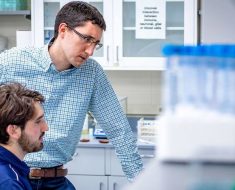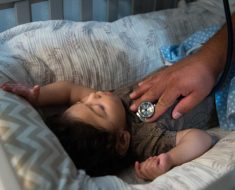One form of the disease begins with large open sores that won’t heal, then migrates to the nose and lips, rotting them away like a form of leprosy and leaving the victim badly disfigured.
Another strain isn’t nearly as visibly grotesque, but it’s far more deadly, attacking the spleen, liver, and bone marrow.
The deadly strain of the disease, visceral leishmaniasis, infects 300,000 people annually, causing 20,000 deaths, according to the World Health Organization. It is the second largest cause of parasitic death after malaria. Another 1 million people are infected with cutaneous leishmaniasis annually and more than 500 million worldwide are at risk for contracting some form of the disease.
You may wonder why you’ve never heard of such a horrid, deadly, and widespread disease.
The answer is simple—it’s a tropical disease suffered primarily by the most impoverished populations in the world. While it poses a risk to American soldiers, researchers, and adventure travelers, the vast majority of cases are found among rural populations in equatorial countries. So for most of the developed world, leishmaniasis is a distant threat.
But for two Northeastern professors, Richard Wamai and Michael Pollastri, controlling the disease is a top priority. The two co-founded the Integrated Initiative for Global Health at Northeastern to spearhead their interdisciplinary work on neglected diseases.
Wamai, an expert in global health, is building a research center in rural Kenya, where he has been conducting research on leishmaniasis for the past eight years. Kenya is one of the seven countries that account for 90 percent of the reported cases of the disease. To advance experiential learning at Northeastern, he has invited students to participate in many of his research trips to the African nation.
Pollastri is attacking the problem in his Northeastern lab, where he develops new medicines to combat neglected tropical diseases. Although the two men are approaching the disease from different disciplines, one as a social scientist and the other as a chemist, they are working collaboratively toward the same goal.
In 2011, Wamai and Pollastri received a $50,000 seed grant from Northeastern to conduct preliminary field research in Kenya needed to win major grants from the National Institutes of Health and other private sources.
“That experience is why my lab got so deeply into this,” said Pollastri. “People were walking 20 kilometers with their whole family to get tested. The kids who suffered from this disease were the same age as my kids, who were 9 and 4 at the time. This isn’t just some academic exercise. It’s as real as it gets.”
A personal mission
Wamai grew up in a rural Kenyan village with no electricity, running water, or indoor toilets. He didn’t have his first pair of shoes until he was 13, and like the other kids in his village, he ran barefoot to school each day. When the kids cut themselves working in the fields, they bound their wounds with dirt to stop the bleeding, which often caused more serious problems.
“Growing up, every little boy had intestinal worms at some point,” he said.
“Mothers would know because their children would be eating and not gaining weight.”
In 1983, at age 13, Wamai took the national test that Kenya administers to determine which children will continue their education.
“I was the top candidate in my district, so I went to a national boarding school 10 miles from my house,” he said. “That’s when I got my first pair of shoes and trousers.”
Source: Read Full Article





